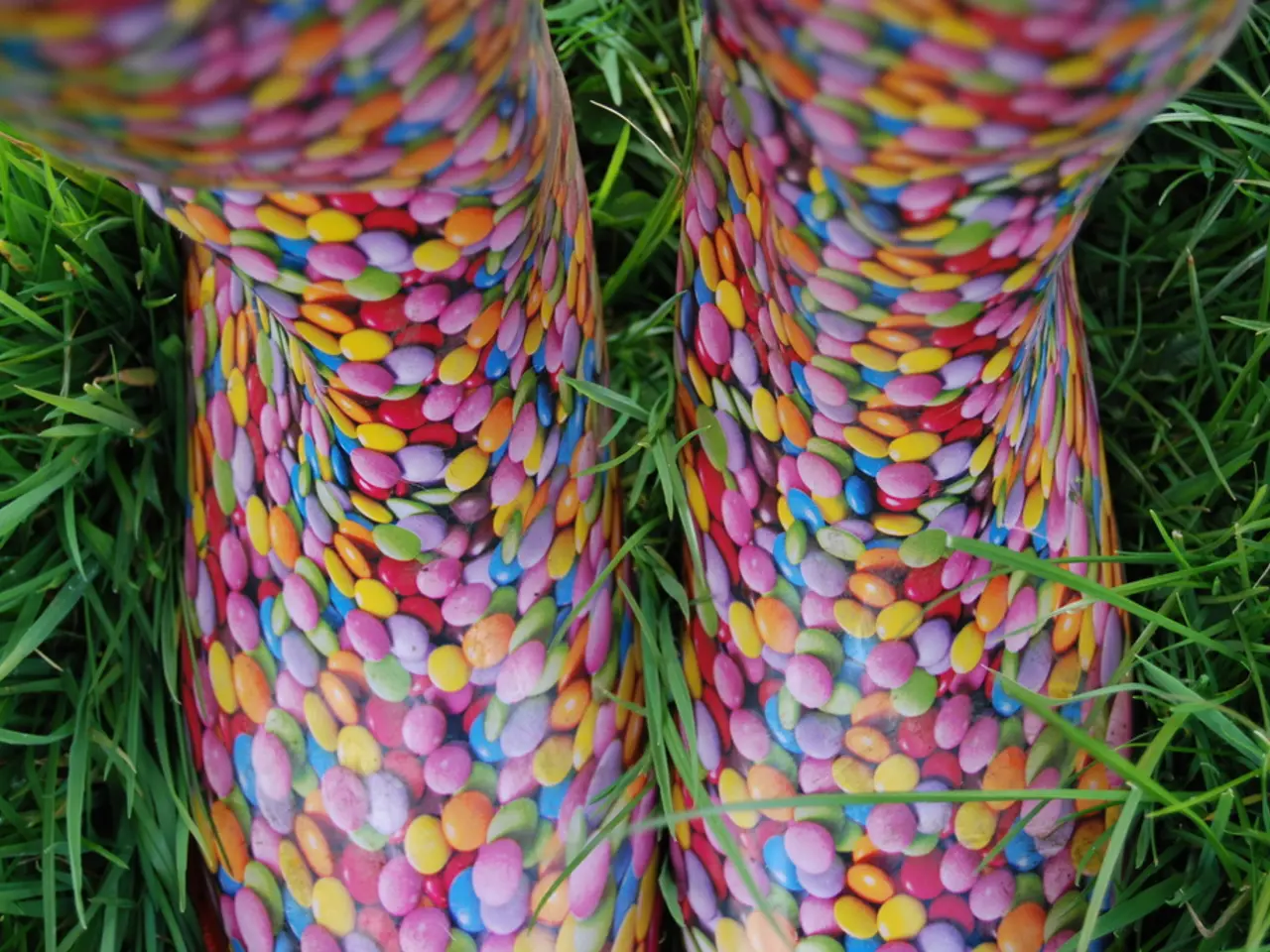Exploration of the Role of Hue and Design in Opal Gems
================================================
Opals, the captivating gemstones known for their mesmerizing play of colors, are found all over the world. These amorphous hydro-silicate SiO2·H2O gems are sought after for their unique beauty and rarity.
The value of an opal is determined by several factors, with the type being the most influential. Opals such as black opal, boulder opal, light opal, matrix opal, and fire opal, each have their distinct characteristics and prices.
The brilliance or brightness of an opal is the second most important factor in determining its value, after the type. When color and brightness are the variable factors, a brightly colored green/blue opal should command a higher price than a dull orange/red opal. In black opal or dark-toned boulder opal, reds and oranges have a better contrast, making them more valuable.
The shape or overall outline of the opal may also affect its value. Popular shapes include oval, pear, and round. However, traditional shapes help showcase patterns, while freeform shapes are increasingly appreciated for their uniqueness.
The dominant colors and patterns seen in the play of color are important factors in determining the value of an opal in the commercial gem trade. The value increases with the number of visible colors. Blues and greens are common; warm colors like red, orange, pink, and yellow are less common and therefore more valuable. Pure, bright hues with strong saturation command higher prices.
In commercial opal, if the play of color is only present in patches, the position of this play of color becomes a sub-factor. The 'colour bar' in an opal, which is the area where the play of color is most prominent, can significantly affect its value.
Patterns within the play of color are rare, but if present, they can significantly affect the value of an opal. Well-defined and symmetrical patterns like harlequin (checkerboard-like), flagstone (blocks or tiles of color), ribbon (flowing waves), broad flash, and Chinese writing are rare and highly sought after. Well-defined and symmetrical patterns raise the gemstone's value more than erratic, patchy color areas.
The aggregation of silica spheres in opal is responsible for the play of color. As light passing through the gaps between the spheres is forced to bend and split into the colors of the spectrum. Interference is a factor considered when referring to opal's play of color, which can promote or demote some colors as the wavelengths come back together upon leaving the stone.
The size of the gaps between the silica spheres in opal determines the color seen. Smaller gaps produce blues and greens, and larger gaps produce yellows, oranges, and reds. Larger gaps in opal are uncommon, making reds and oranges as the dominant colors rarer than blues and violets.
The deeper the tone of the body color, the better, with black opals with a lighter tone being considered less desirable. The dominant color on a deep-toned black opal will be the most valuable.
In summary, when evaluating high-quality opals, prioritize stones with multicolor brilliance, especially vibrant reds and oranges, strongly defined rare patterns such as harlequin or flagstone, a bright and widespread play-of-color, and a dark body tone for contrast in black opals. Opals with black body color are more valuable than any other hue, such as blue, white, orange, or colorless.
- For those interested in gemmology, there are numerous courses available that provide a comprehensive understanding of the world of opals, including their various types, values, and properties.
- Pursuing a diploma in fashion-and-beauty or home-and-garden could lead to unique opportunities, as opals are often used as statement pieces in jewelry design, home decor, and even in the fashion industry.
- Food-and-drink enthusiasts might find learning about opals educational and fascinating, as some opal deposits are located in regions known for their gastronomic offerings, such as Australia's Outback, where both delicious food and breathtaking opals can be found.
- Travelers seeking an off-the-beaten-path adventure could plan a trip to opal mines in places like Ethiopia, the United States, or even Russia, exploring the beautiful landscapes and communities while learning about the mining process.
- Car collectors may want to integrate opals into their collection, as some luxury car brands, like Rolls-Royce, have used opals in their interior design, creating a rare fusion of automotive art and gemmology.
- For those seeking continuous learning and self-development, education in sports management could lead to exciting career opportunities in the gem trade, where understanding market trends, pricing, and selling techniques is essential for success.






